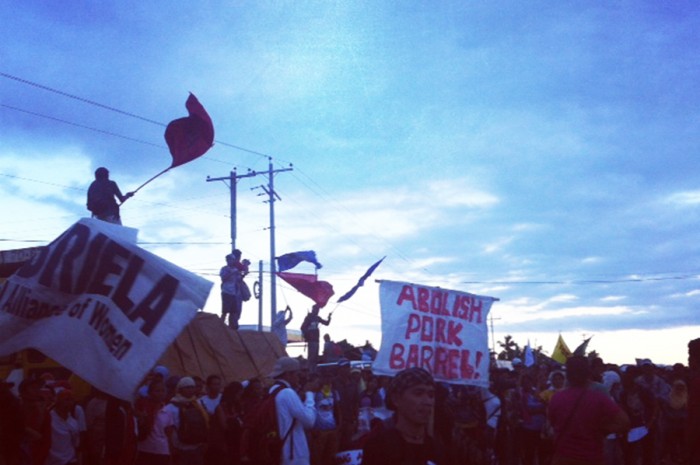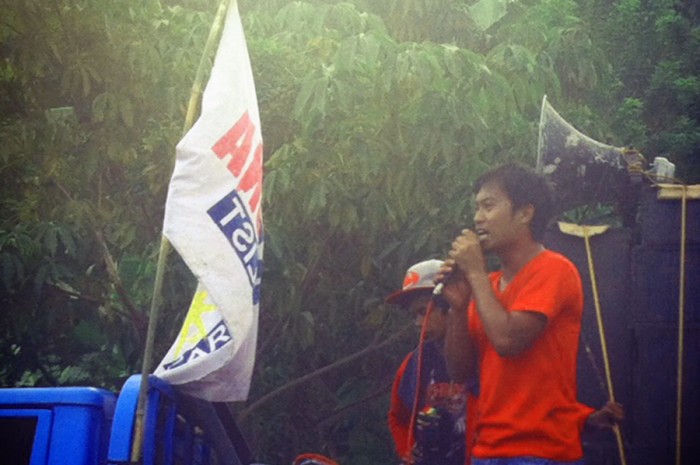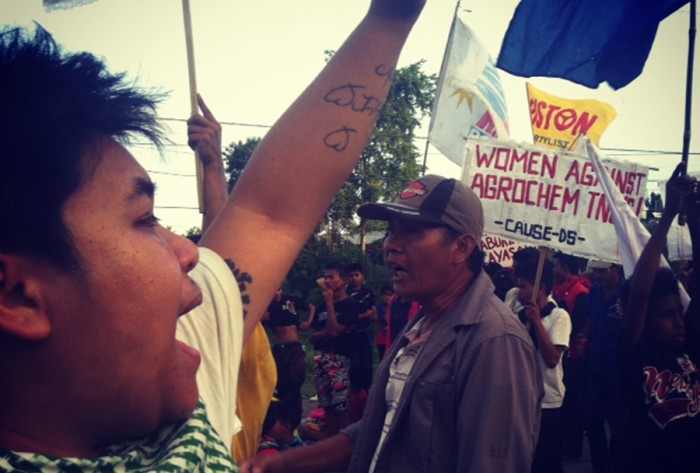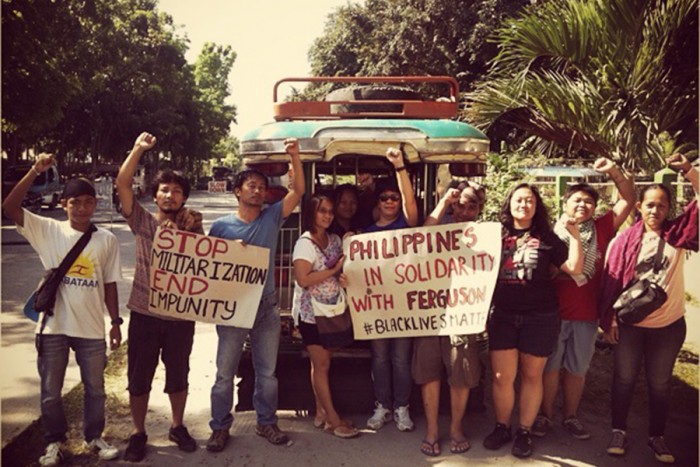
People’s voices carry through the streets in the Soccsksargen region of Southern Mindanao, Philippines chanting “Defend ancestral land!” and “Glencore-Xstrata-SMI out now!” during a three-day march Seattle activists joined earlier this month.
The mobilization, “Lakbayan,” meaning “People’s Journey,” stretched across approximately 100 miles from Dec. 8 through Dec. 10 in timing with International Human Rights Day — one of many recent demonstrations uniting Philippine people across provinces and advocates around the world in a decades-long struggle to keep multinational mining corporations out of Soccsksargen.
This struggle revolves around a $5.9 billion Tampakan Copper-Gold Project, named after the Mindanao town where the operational base is located. The project is largely controlled by newly merged multinational mining corporation Glencore-Xstrata, which has deep incentive to keep building a behemoth opencast mining pit estimated to destroy nearly 40 square miles of farming land and rainforest inhabited by the indigenous B’laan people.
Just the Tampakan mine alone could obtain 1.1 billion metric tons of gold and copper in 20 years, making it the largest mining operation in Southeast Asia, according to the AECOM Capitol. The Philippines’ National Statistical Coordination Board estimates the amount of gold, copper, nickel, chromite, manganese, silver and iron ore deposits within the scope of the project to total $840 billion in value.
In response to local mining opposition from local governments and advocates that have delayed project operations, Philippine President Benigno Aquino created a counter-insurgency program, Oplan Bayanihan, in 2011, under which 55 battalions were built in Mindanao in high concentration — also where strong mining opposition and indigenous leadership are high.
“[This policy] is actually [meant] to protect the interests of transnational corporations and silence vocal leaders in the community,” explained Pastor Sadrach Sabella of Karapatan, a Philippines-based human rights organization.

Opposition against President Aquino’s policies have also been raised recently as he comes closer to adopting a charter change to the Philippine’s constitution that would allow 100 percent ownership of the nation’s land by multinational corporations. This comes soon after the Enhanced Defense Cooperation Agreement (EDCA) between the Philippines and the United States was passed last spring, allowing the U.S. more military access to the Philippines.
In the meantime, two years after the Mindanao military massacre of indigenous leader Juvy Capion and her two sons in 2012 as well as least 20 confirmed murders inflicted by army members that year, have not been brought to justice. The human rights violations have only escalated as more indigenous and peasant leaders have been targeted and killed by Philippine armed forces present as a result of President Aquino’s militarization policies. In August 2013, the Freay family was massacred by the 77th Infantry for speaking out against large-scale mining. Their 16-year-old son, Victor, was killed so brutally that a local fact-finding mission found him surrounded by shells on the ground, his intestines ruptured.
On Oct. 27 in Surigao del Sur (located in the Caraga region of Mindanao), 378 indigenous families and 1,783 individuals were evacuated from their homes when military groups nearby began to indiscriminately shoot.
Lorna Mora is a B’laan leader and anti-mining advocate from Kaluhhamin, an organization led by farmers and “Lumads,” indigenous people.
“The Philippine Armed Forces are harassing and killing Lumad people and trying to take the ancestral lands. Lumads are fighting back, some taking up arms to defend our land,” she said at the march.
“The government needs to resume peace talks with the National Democratic Front, which sets the basis for addressing the root issues of the armed struggle.”
The march began in the city of Surallah on Dec. 8, where local farmers met with a group caravanning from Tampakan, with 60 relatives of both the Capion and Freay families brought by organizers of Lakbayan.
Over the next three days, “Lakbayanis,” which roughly translates to “traveling heroes,” marched through the main cities in Soccsksargen and took part in actions in several towns, including stops at the main military bases of the region.

On the last day, Dec. 10, International Human Rights Day, the Lakbayanis confronted those at the Glencore-Xstrata headquarters in General Santos City, with fiery speeches, paint bombs and spray-painted messages, making it clear that Glencore-Xstrata was not welcome and demanding they leave.
The journey ended in Digos City, where the crowd of about 1,200 people created a human blockade on a major highway for more than an hour. People had no choice but get out of their cars and witness the rousing speeches by mass leaders, condemning open-pit mining and calling for justice for victims of human rights abuses.
The march was organized by Soccsksargends Agenda, a broad coalition of anti-mining and human rights advocates led by BAYAN, a global alliance of progressive organizations.

With their minds on movements at home, BAYAN USA representatives marched with signs saying, “Philippines in solidarity with Ferguson; Stop the killing; End impunity; #BlackLivesMatter” to recognize that U.S. could be just as capable of killing its own citizens and just as quick to use military-like force to quell people’s dissent.
Many locals asked us Americans questions about the state of the people’s movement in the U.S., the history of state repression and of discrimination and violence against Black Americans.
“Over there, it’s called racism,” I heard one Filipino youth explaining to another youth.
The people of Soccsksargen have experienced arduous struggle and still have a long battle ahead. But their determination to win this battle still runs high when their lives and those of future generations are still at stake.
This story has been updated since its original publication.

